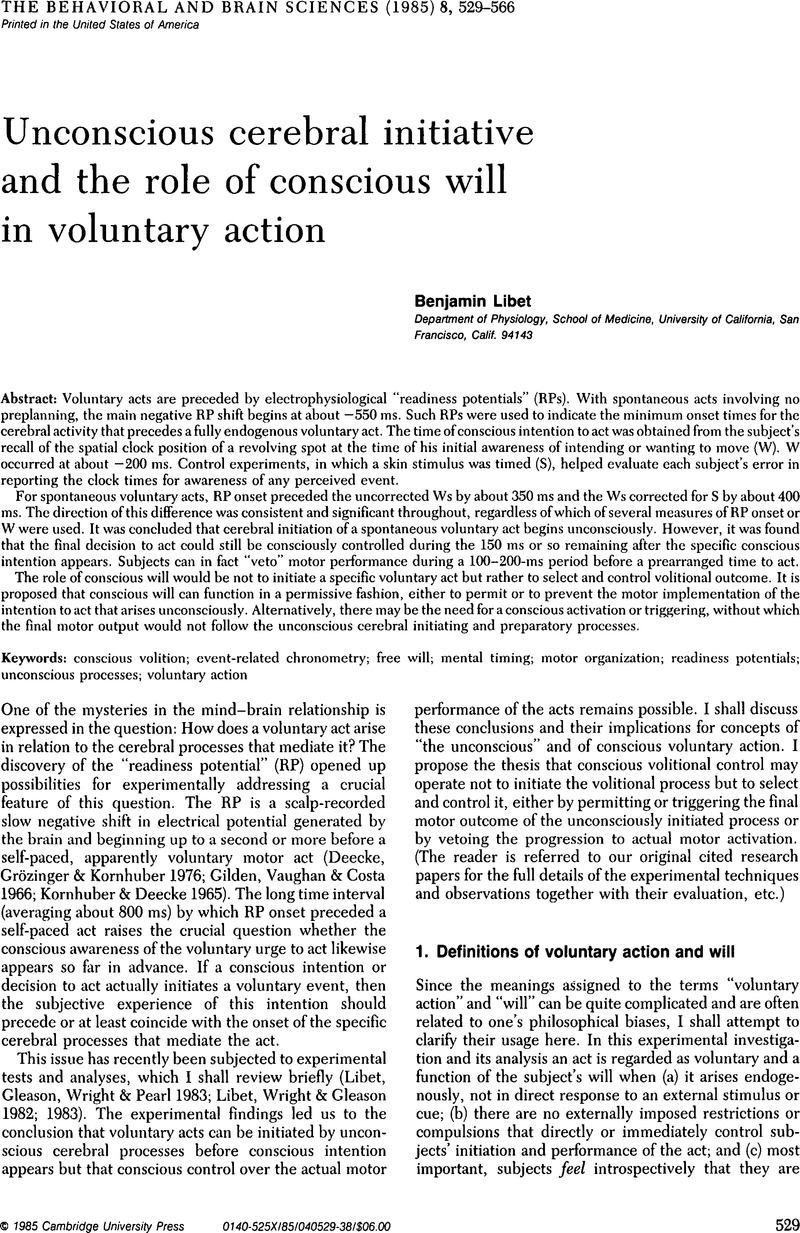Crossref Citations
This article has been cited by the following publications. This list is generated based on data provided by Crossref.
Hoffman, Ralph E.
and
Kravitz, Richard E.
1987.
Feedforward action regulation and the experience of will.
Behavioral and Brain Sciences,
Vol. 10,
Issue. 04,
p.
782.
Libet, Benjamin
1987.
Are the mental experiences of will and self-control significant for the performance of a voluntary act?.
Behavioral and Brain Sciences,
Vol. 10,
Issue. 04,
p.
783.
Deecke, Lüder
1987.
The natural explanation for the two components of the readiness potential.
Behavioral and Brain Sciences,
Vol. 10,
Issue. 04,
p.
781.
Salter, David
1989.
Voluntary process and the readiness potential: Asking the right questions.
Behavioral and Brain Sciences,
Vol. 12,
Issue. 1,
p.
181.
Libet, Benjamin
1989.
The timing of a subjective experience.
Behavioral and Brain Sciences,
Vol. 12,
Issue. 1,
p.
183.
Deecke, L.
Hoffman, R. E.
and
Kravitz, R. E.
1993.
Neurophysiology of Consciousness.
p.
307.
Libet, Benjamin
1993.
Neurophysiology of Consciousness.
p.
325.
Salter, D.
1993.
Neurophysiology of Consciousness.
p.
319.
1994.
L'homme fou.
p.
325.
Delacour, Jean
1995.
An introduction to the biology of consciousness.
Neuropsychologia,
Vol. 33,
Issue. 9,
p.
1061.
Gomes, Gilberto
2002.
The Interpretation of Libet's Results on the Timing of Conscious Events: A Commentary.
Consciousness and Cognition,
Vol. 11,
Issue. 2,
p.
221.
Schleim, Stephan
2015.
Fremdkontrolle.
p.
265.
CR, Mukundan
C, Kamarajan
and
P, Ajayan
2019.
Live and die - develop a mind within, while living, using which one learns to create ideas, functional systems, and knowledge; and die later, when the mind ceases to be present.
Journal of Psychology & Clinical Psychiatry,
Vol. 10,
Issue. 6,
p.
234.
Ansarinejad, Fatemeh
Moradi, Alireza
Khosroabadi, Reza
and
Fathi Ashtiani, Ali
2020.
Intentional Binding and Sense of Agency of Visual Outcomes.
The Neuroscience Journal of Shefaye Khatam,
Vol. 9,
Issue. 1,
p.
68.
Fujisaki, Chieko
2024.
The potential of hand cutaneous vision: A study on groups of sighted individuals and two cases of blind adults.
British Journal of Visual Impairment,



